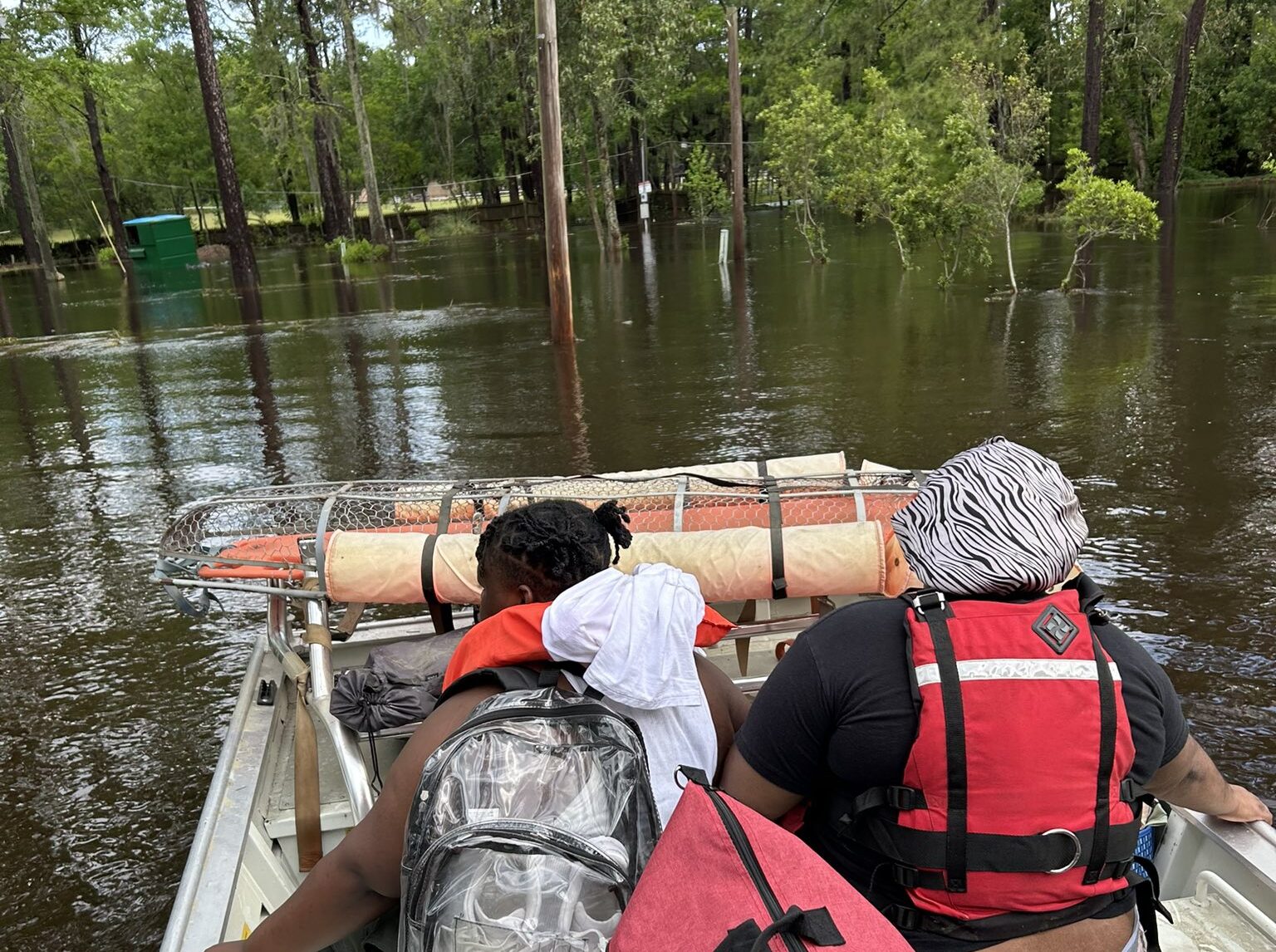What we’re watching: Weekly disaster update, April 15

We know all too well that disaster can strike anytime, anywhere in the world. Some disasters make headlines; others do not. Here at the Center for Disaster Philanthropy (CDP), we monitor the status of disasters worldwide and compile a list of the ones we’re tracking weekly, along with relevant disaster-related media coverage.
Here’s what we’re watching for the week of April 15, 2024.
New or Emerging Disasters
Flooding – Afghanistan: Since April 12, at least 33 people have died after heavy rain and flash floods damaged and destroyed homes in Afghanistan. Approximately 27 people were injured, and more than 600 houses and 1,000 households were affected. The flooding also killed 200 livestock and washed away 85 miles (137 kilometers) of road and 1,975 acres (800 hectares) of agricultural land. The flooding has affected 20 of Afghanistan’s 32 provinces, with Herat, Kandahar, Zabul and Farah among the worst affected.
For more, see our Afghanistan Humanitarian Crisis disaster profile.
Flooding – Tanzania: On April 12, eight children died after a bus plunged into a flooded gorge in north Tanzania. This latest accident comes after reports found that almost 60 people died in April due to heavy rainfall and flooding. According to a government spokesperson, over 10,000 households have been affected by flooding, and 75,000 farms have been damaged in coastal regions. Weather experts say the El Niño phenomenon may have exacerbated this year’s seasonal rains.
Landslide – Indonesia: A landslide on Indonesia’s Sulawesi island on April 13 left at least 18 people dead and two others missing. Damaged roads, downed communication lines and poor weather conditions have complicated emergency response efforts. Torrential rain on hills loosened mud and soil and flattened multiple homes. Indonesia’s rainy season, causing landslides and flooding, began in January and left at least 26 dead last month.
Severe Weather and Tornadoes – Southeast U.S.: A deadly storm system moved through parts of the southeast U.S., causing severe flooding, destroying homes and leaving thousands without power. Between April 9 and 11, 14 confirmed tornadoes moved through Texas, Louisiana, Mississippi, Alabama and Florida. In Mississippi, one casualty due to the storms was recorded. More than 30,000 homes and businesses were without power in Louisiana after a tornado struck the city of Slidell, where hundreds of homes are estimated to have been damaged.
For more, see our 2024 U.S. Tornadoes disaster profile.
Wildfires – Oklahoma: On April 8, two firefighters were injured after battling a wildfire burning more than 5,000 acres (2,023 hectares) in Woodward County, Oklahoma. Over 1,000 people were under mandatory evacuation orders, and more than 1,200 houses were threatened. As of April 12, the fires are 100% contained.
For more, see our 2024 North American Wildfires disaster profile.
Previous/Ongoing Disasters
Flooding – Kazakhstan and Russia: Deemed one of the worst floods in recorded history, over 100,000 people have been evacuated across Kazakhstan and Russia after a brisk heat wave caused large amounts of snow to melt rapidly, flooding rivers and breaking a local dam. More than 3,400 buildings remain flooded in Kazakhstan, and nine bridges have collapsed.
In Russia, as of April 12, there were more than 12,800 flooded houses and over 7,000 evacuated people, many in evacuation centers. Authorities in Russia say the situation is expected to stabilize after April 20.
Wildfires – Mexico: More than 70 wildfires have burned over 56,800 acres (23,000 hectares) across 19 states in Mexico. The state of Oaxaca has been worst affected, resulting in national authorities stepping into firefighting operations. Due to continued burning and significantly worse conditions in 2024 compared to the same period in 2023, an emergency management service was activated to map wildfires rapidly.
Earthquake – Taiwan: The deadly 7.2 magnitude earthquake on April 3 now has a death toll of 17. Ongoing search and rescue operations for two missing people in Hualien, the epicenter, were temporarily suspended due to the high risk of landslides.
As aftershocks continued, falling boulders and rocks caused an express train traveling on April 10 to derail. As of April 10, more than 800 aftershocks were recorded in Hualien since April 3.
For more, see our 2024 Taiwan Earthquake disaster profile.
In addition to the disasters listed above, we actively monitor the following disasters or humanitarian emergencies. For more information, see the relevant disaster profiles, which are updated regularly.
- Gaza-Israeli Humanitarian Crisis
- Haiti Humanitarian Crisis
- Horn of Africa Hunger Crisis
- 2024 Chile Wildfires
- 2024 Japan Earthquake
- 2023 Libya Floods
- 2023 Turkey-Syria Earthquake
Complex Humanitarian Emergencies – Colombia
Many places worldwide are experiencing emergencies caused by conflict, climate change, drought, famine, economic challenges and other conditions that combine to create a complex humanitarian emergency (CHE). CDP maintains complete profiles on several CHEs, and what CDP considers Level 1 CHEs are profiled in this weekly blog post and tracked.
The United Nations Office for the Coordination of Humanitarian Affairs recently released a new report that found over 1.86 million people in Colombia reside in areas largely inaccessible to humanitarians due to restrictions, threats of violence and hostilities. Access impediments can severely harm populations in need of humanitarian aid and services.
A modest improvement in food security was recorded in December 2023 due to increased household capacity to purchase food. Despite this, half of Colombia risks sliding into a severe situation of food insecurity due to climate-induced disasters such as wildfires and floods and the economic slowdown. Furthermore, armed non-state groups (ANSA) and insecurity compound challenges such as poor infrastructure, lack of humanitarian access and reliance on traditional farming methods, hampering farmers’ ability to produce and generate income.
Indigenous communities such as the Wayuu and migrants and refugees from Venezuela are considered the most affected populations due to food insecurity, water shortage and diseases. Given Colombia’s high exposure to climate risks, the World Bank and Colombia reiterated their commitment to climate action by promoting policies and reforms to strengthen institutional government capacity and ensure resilience and sustainability.
Despite the presence of ANSAs, humanitarian needs and poor economic conditions, peace talks between the government and rebel groups have contributed to an overall reduction in clashes and battles. The situation is precarious, however, given a lack of ceasefire with one of the most prominent armed groups, the National Liberation Army and continued aerial bombings against the Gulf Clan.
What We’re Reading
- Global Stockpile of Cholera Vaccine is Gone as Outbreaks Spread – New York Times: The only company that makes cholera vaccine, EuBiologics in South Korea, is working at a ”heroic” pace to expand its production due to high demand for the vaccine. In 2023, over 76 million doses of Cholera were requested. Only 38 million doses were available in the stockpile.
- How countries in conflict zones can recover from floods – lessons from Pakistan – The Conversation: A comparative analysis of Pakistan and Libya’s response to floods found a lack of planning and meaningful long-term recovery efforts in Libya. Meanwhile, Pakistan’s response to its 2022 floods included a comprehensive post-disaster needs assessment and a clear strategy for building priorities over the coming five years.
- Saltwater intrusion in the Mississippi River has worsened. New research is closing in on the reasons. – NOLA: A team of researchers found that rising sea levels and natural breaks in rivers may have been additional factors that caused last year’s severe saltwater intrusion. According to researchers, the threat of saltwater intrusion and its impact on drinking water may be mitigated by building a sill at the entrance of a crevasse to control the flow of the river.
- Social cohesion in displacement: when aid actors should step back – ODI: This paper is a policy analysis of a project that explored social cohesion among refugee communities and between refugee and host communities. Expert recommendations include pragmatism on limits and risks, equity and transparency, and political coherence.
- The power of gender-just climate action and the urgent need for funding – Alliance: Less than 1% of all philanthropy funding focuses on gender and the environment. Resourcing community-led feminist approaches is a proven solution to the global climate crisis and tackles the historical and structural inequalities at the root of the climate crisis.
- What happened at the European Humanitarian Forum? – The New Humanitarian: The third iteration of the European Humanitarian Forum opened with a focus on the global shortage in humanitarian funding, gang violence and climate resilience. Observers noted a lack of discussion on initiatives and leadership originating elsewhere.
